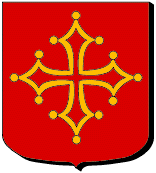If Lyonnais is a highly independent
province of Bretonnia, its neighbour, La Navarre, often seems like it
is another country altogether. Largely this is a matter of culture and
history, but race and geography also play their part. The Navarrese
look distinctly different from Bretonnians, with jet black hair and
often swarthier complexions. La Navarre itself is also different from
the rest of the Kingdom, there are few of the green meadows and lazy
rivers that characterise the rest of the realm. Instead, Navarre is a
sparse, hilly province, getting increasingly wilder as it reaches the
foothills of the Irranas. La Navarre was, in fact, not part of Gilles
le
Breton's realm, and was added to the Kingdom of Bretonnia almost three
centuries later through dynastic alliance. Over a millennia later,
although there is no real question of secession, Navarrese and
Bretonnians still tend to regard each other as foreigners. This
tendency is increased by the fact that the Navarrese have their own
language, Languedoc, which is distantly related to Estalian, though
most do speak Bretonnian. The Navarrese have a strong sense of identity
and pride in their land, which they have defended many times against
the Estalians (for whom they have an abiding hatred). Not withstanding
this, as most Bretonnians take pleasure in pointing out, the Navarrese
are remarkably similar to the Estalians in culture, temperament, and
appearance. The culture of the Southern Old World is omnipresent here,
with devotion to the Southern cults fiercely devout especially to
Ste-Leonidas, the Myrmidian patron saint of Navarre. There are few
followers of the Northern pantheon. The cult of the Lady is notable by
its absence from these lands. The Navarrese are a passionate people,
swift to friendship or enmity; generous, hospitable and loyal to family
and friends, but merciless to enemies, and capable of nurturing
vendettas for generations.
 La Navarre
La Navarre La Navarre
La Navarre